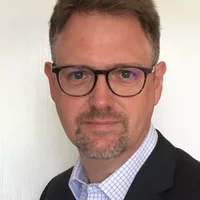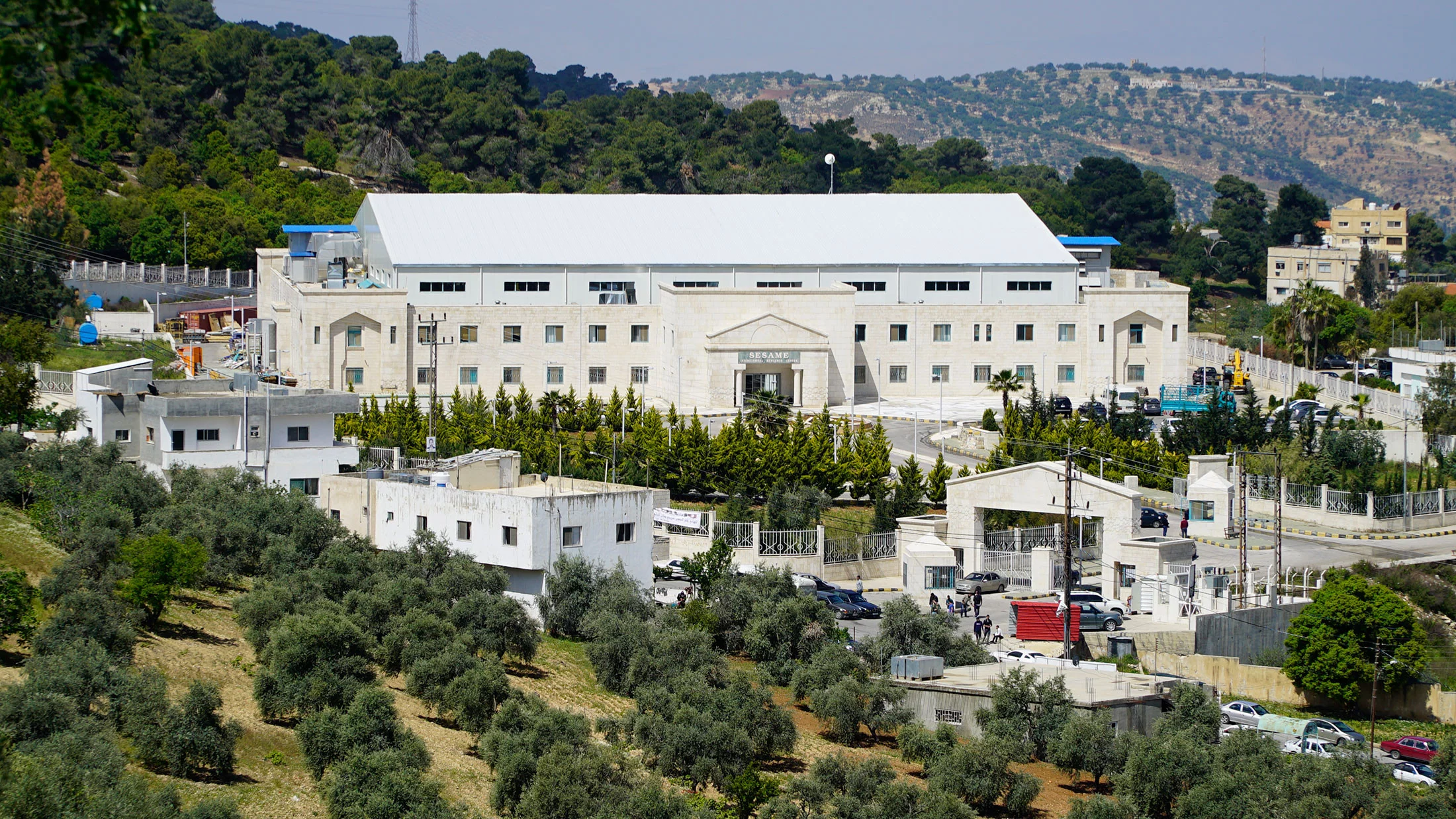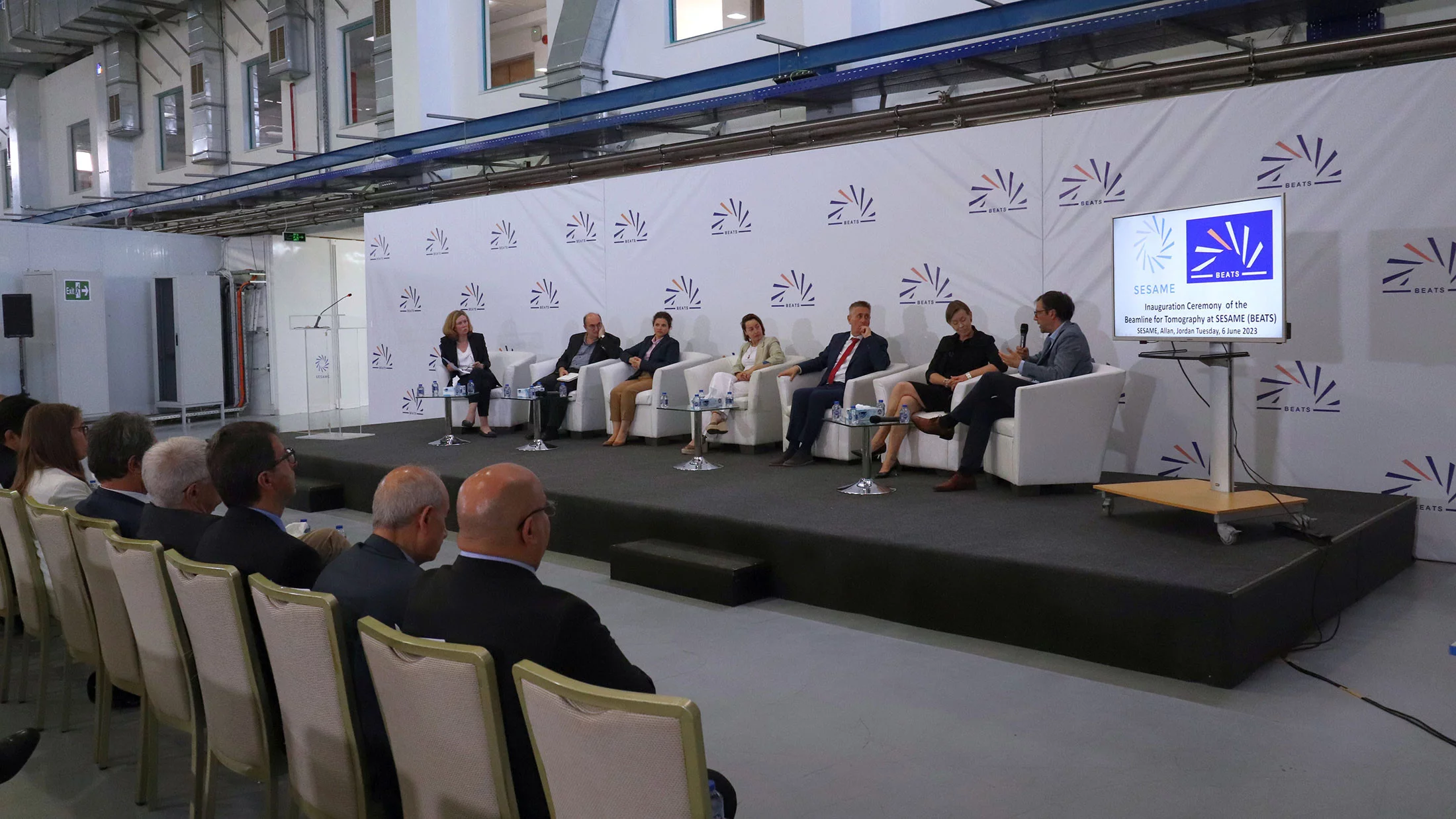The “BEAmline for Tomography at Sesame” – BEATS for short – was recently inaugurated as the fifth beamline at the SESAME synchrotron facility in Jordan. BEATS was realised thanks to a European project, and it received help from SESAME’s big sister SLS in several ways.
The synchrotron facility SESAME in Jordan is occasionally called the “CERN of the Middle East”: Both are international research facilities and SESAME’s organizational structure is based on the model of CERN. SESAME (Synchrotron-Light for Experimental Science and Applications in the Middle East) aims to be a bridge of peace between nations while at the same time being a place where scientists can perform cutting-edge research. In operation since 2017, it is an independent laboratory and the only synchrotron facility in the Middle East.
On 11 May 2023, a new beamline at SESAME first delivered synchrotron light to its experimental station: BEATS, which is short for “BEAmline for Tomography at Sesame”, provides full-field X-ray radiography and tomography techniques that are new at SESAME. As the fifth beamline of the synchrotron facility, it will extend considerably its scientific possibilities and the research opportunities in the region. On 6 June 2023, BEATS was ceremoniously inaugurated in the presence of researchers from the BEATS beneficiary, and ambassadors and political delegates from the countries involved.
BEATS was designed, built and successfully commissioned thanks to a European project that brought together leading research facilities in the Middle East (SESAME and The Cyprus Institute), and European synchrotron radiation facilities, amongst them PSI. The project was coordinated by ESRF (France) and included ALBA-CELLS (Spain), DESY (Germany), Elettra (Italy), INFN (Italy) and SOLARIS (Poland). The initiative was funded through a 6 Mio € grant by the European Union’s Horizon 2020 research and innovation programme under Grant Agreement No. 822535.
Beamline-trainings and donated components
PSI’s involvement in SESAME in general and BEATS in particular dates back several years, explains Marco Stampanoni, head of the X-ray Tomography research group and leading scientist at the TOMCAT beamline at SLS, PSI.
“In 2020, we welcomed several SESAME controls engineers and the BEATS beamline scientist Gianluca Iori for a 3-month training at PSI”, says Stampanoni. Since the layout of BEATS was inspired by TOMCAT, Gianluca found the ideal place for training here and could learn many practical aspects of operating a tomography beamline. Stampanoni concludes: “Gianluca’s know-how later proved to be essential for the commissioning of the BEATS beamline, which to the great pleasure of all of us was highly successful.”
Additionally, TOMCAT contributed by donating a first generation sample manipulator to BEATS in February 2023. As part of the current upgrade project SLS 2.0, TOMCAT is currently receiving an update, which includes a new sample manipulator that was financed by a R’Equip grant of SNSF and got installed in March 2023.
Stampanoni points out that PSI had previously also donated the components for SESAME’s Materials Science (MS) beamline, which had been decommissioned at SLS. The Swiss company Dectris, a spin-off of PSI, contributed a powerful PILATUS 300K area detector. With these, SESAME’s MS beamline is in operation since 2020.
A success for the region and for international scientific collaborations
As head of the BEATS Steering Committee, Mirjam van Daalen, head of Communications at PSI, was highly involved during the project. She was honoured to chair the inauguration event of BEATS on 6 June. She also moderated the panel discussion of the day, during which it became clear that BEATS will contribute towards a bright future for the research and innovation ecosystem of the region.
“Everywhere in the world, the growth of scientific knowledge promotes societal advancement and contributes to innovation”, she says. “We were overjoyed when BEATS got first light perfectly on schedule. It has been an honour to see it all come together so successfully and to be part of this amazing international collaboration.”
As for the science that will become available with BEATS, researchers are looking forward to two kinds of powerful experimental 3D imaging techniques: full-field X-ray radiography and tomography. These will be helpful for the analysis of a large variety of objects and materials and thus offer the opportunity to study diverse scientific questions across medicine, biology, engineering, materials science as well as earth and planetary sciences. Due to its non-destructive approach, the new beamline is of particular importance to the study of cultural heritage and archaeological samples, thus representing a key asset for researchers in the SESAME region.
Text: Paul Scherrer Institute/Laura Hennemann
© PSI provides image and/or video material free of charge for media coverage of the content of the above text. Use of this material for other purposes is not permitted. This also includes the transfer of the image and video material into databases as well as sale by third parties.


